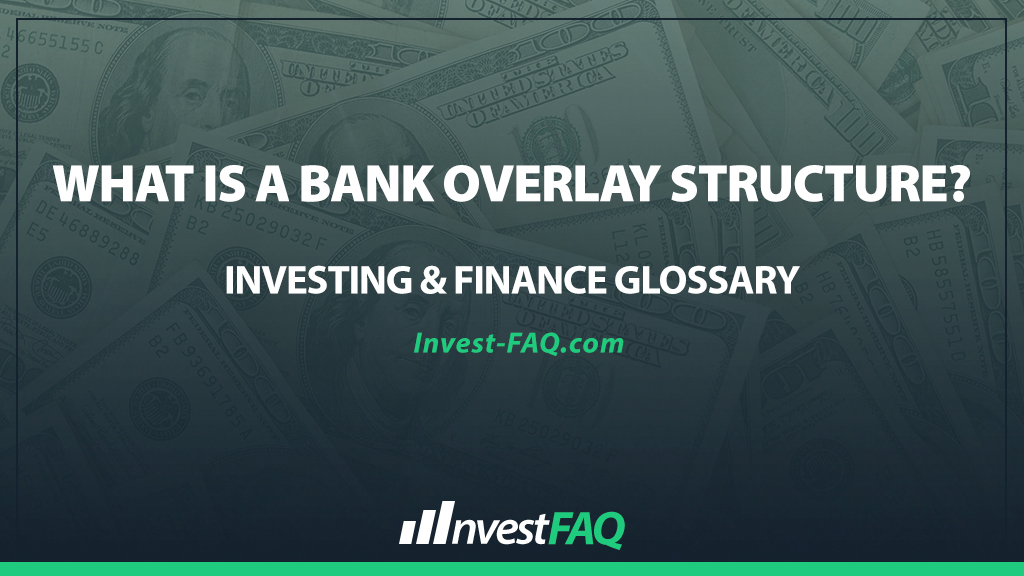
Bank Overlay Structure
Contents
A bank overlay structure is a sophisticated financial arrangement that allows businesses to manage multiple bank accounts and financial products under a single, unified platform. This structure streamlines cash management and treasury functions, facilitating efficient oversight of liquidity, investments, and risks across different currencies and geographic locations.
Businesses, especially multinational corporations with complex banking needs, utilize bank overlay structures to optimize their financial operations.
By consolidating the management of various accounts and services, companies can achieve greater visibility into their cash positions, enhance operational efficiencies, and improve decision-making regarding cash utilization and risk management.
This arrangement is particularly beneficial for businesses looking to centralize their treasury operations without sacrificing the flexibility and local benefits of holding multiple accounts with different banks.
Example of a Bank Overlay Structure
Imagine Global Tech Inc., a multinational company, operates accounts in over ten countries, dealing with multiple currencies.
To manage its global cash flow effectively, Global Tech Inc. implements a bank overlay structure, which centralizes the oversight of its $5 million in cash reserves, $2 million in short-term investments, and various foreign currency holdings.
In their accounting records, Global Tech Inc. would consolidate the transactions and balances from all these accounts into a single platform, allowing for simplified recording and analysis:
Cash and Cash Equivalents (Asset): Consolidated balance of $5 million
Short-term Investments (Asset): $2 million
Foreign Currency Holdings (Asset/Liability): Adjusted for current exchange rates
In this scenario, the bank overlay structure enables Global Tech Inc. to view and manage its financial resources holistically.
By consolidating the financial data from its diverse accounts and investments, Global Tech gains real-time insight into its global liquidity and financial exposure.
This comprehensive visibility allows for more strategic cash management, including optimizing currency exposure, enhancing investment returns, and efficiently allocating capital for operational and strategic needs.
Significance for Investing & Finance
The bank overlay structure holds significant importance in accounting for several reasons:
Enhanced Financial Control: It offers businesses a macro view of their finances, improving control over cash management and investment strategies.
Risk Mitigation: Centralized visibility into all bank accounts and financial products helps businesses better identify and manage financial risks, including currency and interest rate exposure.
Operational Efficiency: Streamlining the management of multiple accounts reduces administrative burdens and operational costs, allowing businesses to allocate resources more effectively.
Regulatory Compliance: Simplified account management aids in meeting regulatory reporting requirements by providing a clear, consolidated view of financial activities across different jurisdictions.
In summary, a bank overlay structure is a powerful tool for businesses operating on a global scale, offering enhanced control, visibility, and efficiency in financial management.
By integrating multiple banking relationships and accounts into a unified platform, companies can better navigate the complexities of international finance, manage risks more effectively, and make informed decisions to support their growth and financial health.
FAQ
How does a bank overlay structure enhance a multinational company’s cash management?
A bank overlay structure provides centralized visibility and control over all cash positions and transactions across different accounts and currencies, enabling more effective liquidity management and operational efficiency for multinational companies.
Can implementing a bank overlay structure reduce financial risks for businesses?
Yes, by consolidating financial information in a single platform, a bank overlay structure allows businesses to better monitor and manage currency, interest rate, and operational risks, leading to more informed decision-making and risk mitigation strategies.
What are the key benefits of a bank overlay structure for treasury operations?
The key benefits include centralized control over multiple banking relationships, improved cash visibility across all accounts, streamlined reconciliation processes, and enhanced efficiency in managing global cash flows and investments.
Is a bank overlay structure suitable for small businesses, or is it only beneficial for large corporations?
While primarily beneficial for large, multinational corporations with complex banking needs and operations across multiple countries, small businesses with simpler structures might not require the complexity of a bank overlay structure, though they can still benefit from centralized financial management solutions tailored to their scale.
